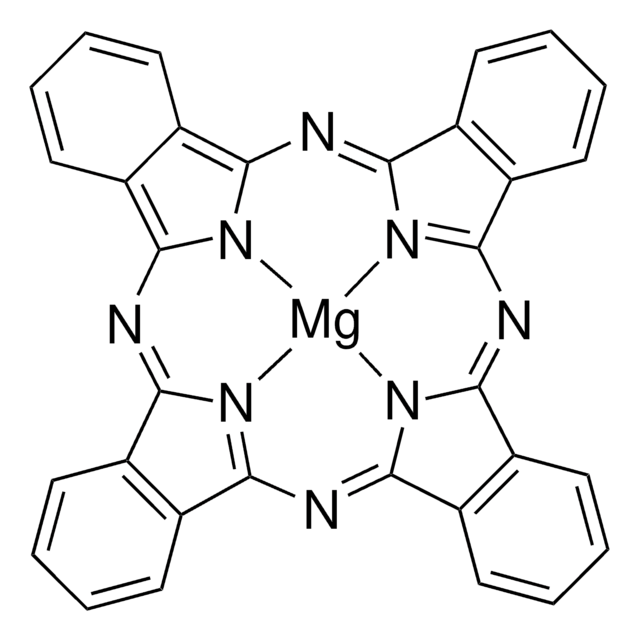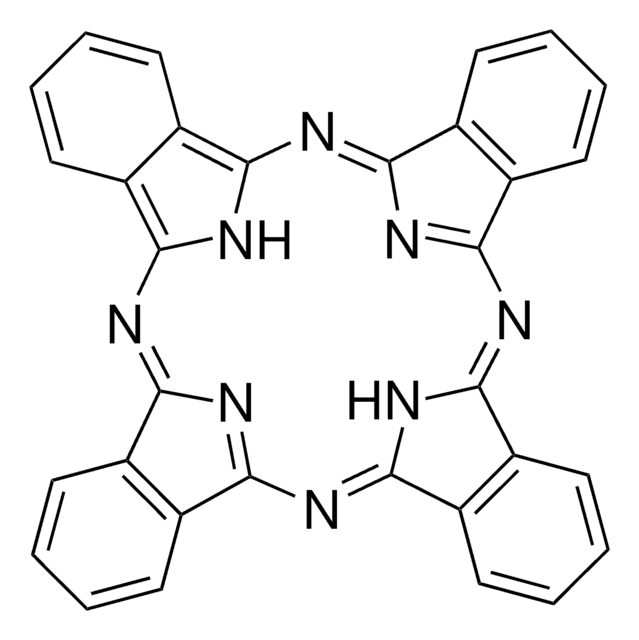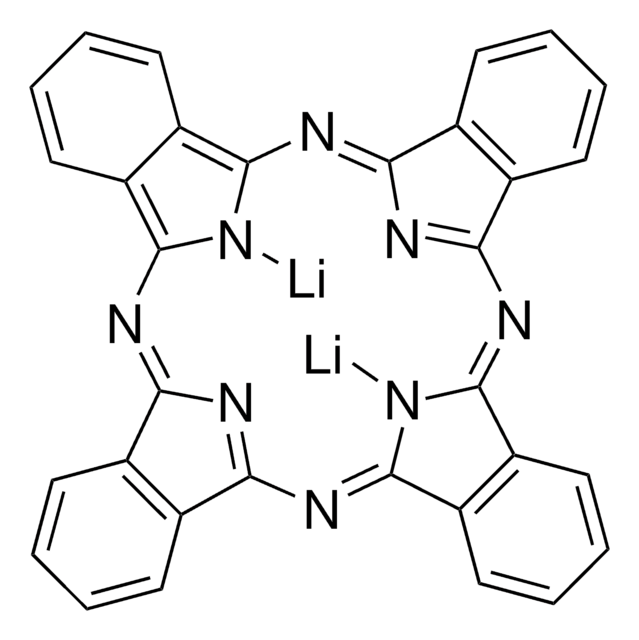931985
Phthalocyanine
Synonyme(s) :
Dehydrophthalocyanine, H2Pc, Pigment Blue 16
About This Item
Produits recommandés
Description
PL: 418 nm
μh ≈ 4.0 x 10−5 cm2 V−1 s−1
Niveau de qualité
Pf
>300 °C (dec.)
Température de transition
Tg >350 °C ((0.5% weight loss))
Solubilité
DMF: soluble
Énergie orbitale
HOMO 5.35 eV
LUMO 3.35 eV
Absorption UV
λ: 279 nm Amax
λ: 693 nm Amax
Chaîne SMILES
c1ccc2c3nc(nc4[nH]c(nc5nc(nc6[nH]c(n3)c7ccccc67)c8ccccc58)c9ccccc49)c2c1
Vous recherchez des produits similaires ? Visite Guide de comparaison des produits
Catégories apparentées
Application
In the field of organic electronics, H2Pc has been explored as a popular Hole Injection Layer (HIL) material for organic light-emitting diode devices (OLEDs).This special compound has also been explored for solar cells application given its robust and intensely colored macrocycles (blue pigments) with high chem., thermal and light stability, properties that are of paramount importance for realistic photovoltaic applications. H2Pc have attracted special attention as photosensitizers for dye-sensitized solar cells (DSSCs).
In biomedicine, phthalocyanine can serve as selective fluorescent probes for bioanal. and bioimaging, and as efficient photosensitizers for photodynamic therapy of cancer and other non-cancerous conditions.
Produit(s) apparenté(s)
Code de la classe de stockage
11 - Combustible Solids
Classe de danger pour l'eau (WGK)
WGK 1
Point d'éclair (°F)
Not applicable
Point d'éclair (°C)
Not applicable
Certificats d'analyse (COA)
Recherchez un Certificats d'analyse (COA) en saisissant le numéro de lot du produit. Les numéros de lot figurent sur l'étiquette du produit après les mots "Lot" ou "Batch".
Déjà en possession de ce produit ?
Retrouvez la documentation relative aux produits que vous avez récemment achetés dans la Bibliothèque de documents.
Notre équipe de scientifiques dispose d'une expérience dans tous les secteurs de la recherche, notamment en sciences de la vie, science des matériaux, synthèse chimique, chromatographie, analyse et dans de nombreux autres domaines..
Contacter notre Service technique





